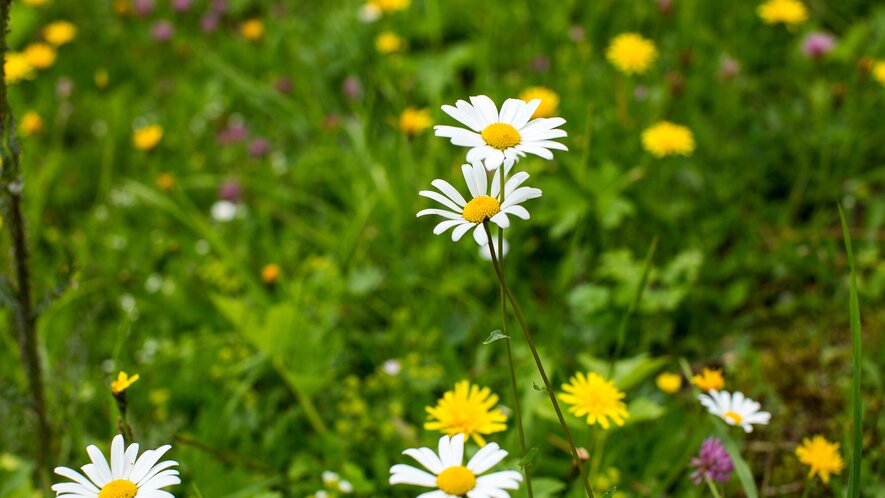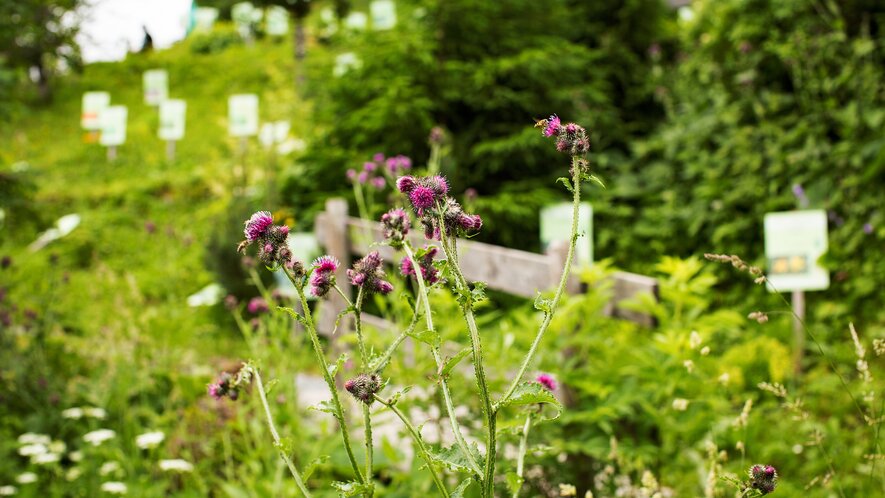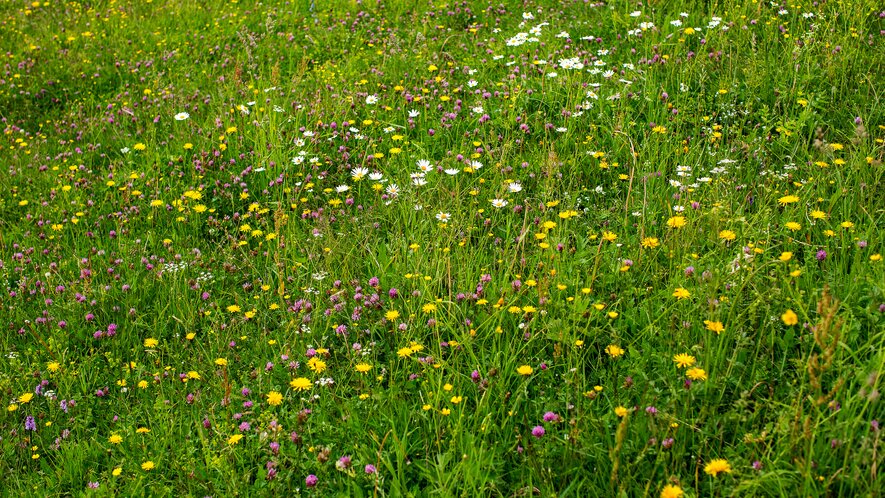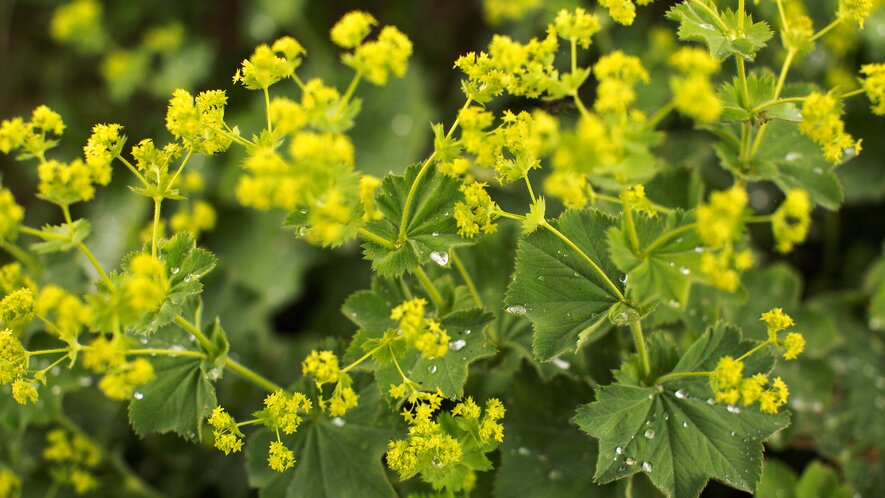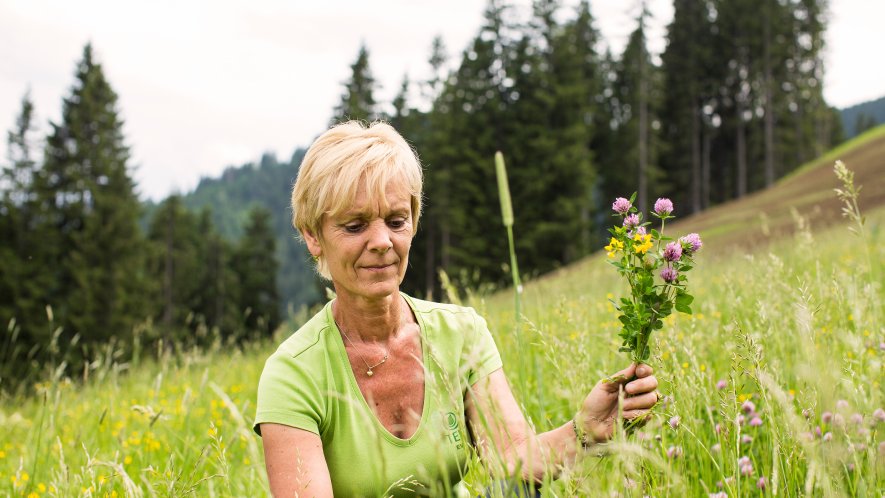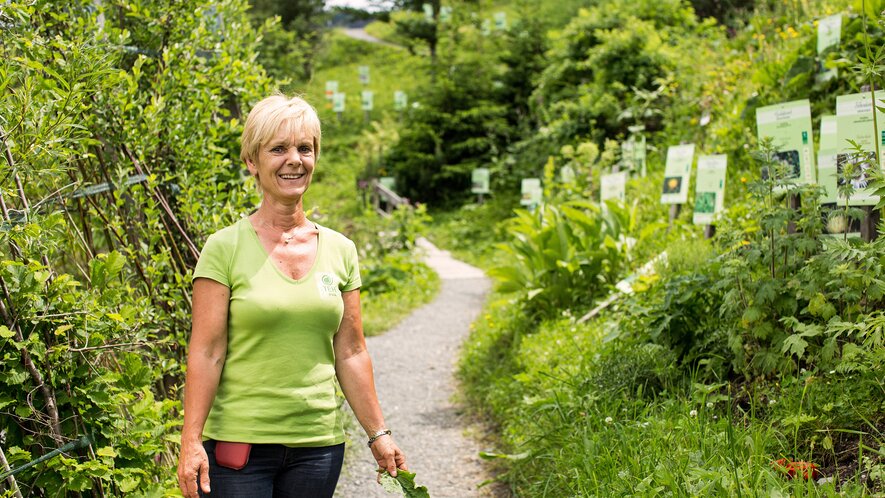Medicinal knowledge from the Pinzgau region
The ancestors, who lived in the Pinzgau region, knew exactly what they needed to feel good. They knew which herb is effectively used against which aches, pains or illnesses, how to process them and use them and how to interpret the signs of nature. However, this old knowledge was almost lost. When Karin Buchart startet to write her thesis about the medicinal knowledge of the Pinzgau region and people, she probably didn't know yet which spark she would set on fire. Today she is the head of the TEH® association (Traditional European Healing), which is dedicated to the collection and dissemination of knowledge about local medicinal plants. By the way, the herbs are presented in a particularly attractive way on the Mountain of the Senses with the herb and alpine plant trail.
57 local plants
"If you drink elderflower juice in November, you will get through the winter in good health", Karin Buchart recorded such and similar words of wisdom from old Pinzgauers during her doctoral thesis. She constantly compared these statements with the knowledge of conventional medicine and translated them into technical language. In the end, there were 57 local plants for which she found correspondences. Today they form the basis of the TEH® courses and seminars.
Imprinting and conditioned stimuli
In addition to that she found out that even phrases like, "The herb that grows outside your door is good for you," have their truth. We have had a relationship with our local plants since we were very young. Children respond very well to the natural effects of medicinal herbs. So we are influenced from the beginning with the local and develop conditioned stimuli. So if something did us good in childhood, it remains so until old age.
The TEH® association is born
The interest in the research of medicinal herbs infected many people and so a project group was formed in 2005. In 2007, 15 committed people founded the TEH® Association (Traditional European Healing), which is headed by chairwoman Theresia Harrer and Karin Buchart. When asked why "European" and not regional "Pinzgau", Theresia Harrer explains: "We can't keep the area too small. That would be neither honest nor good. We use herbs and plants from a radius of 80 to 100 kilometers. And when we produce ointments, for example, we need olive oil." Since its founding, the TEH® Association has set itself the goal of collecting the medicinal knowledge of the people from the Pinzgau region, regional, traditional applications, remedies and rituals, to reprocess them scientifically, to revive them and to carry them into the families. Since then, almost 300 participants have completed the training to become TEH® practitioners.
Acknowledged by UNESCO
"2010 was a special year. Our association was put on the national list of immaterial cultural heritage by the UNESCO commission. Because we do not only take up the old knowledge, but especially do we take care of today's problems. While in the past it was important to have a remedy for frozen fingers, today it is about being able to serve with soothing as well as stress-relieving solutions. When we opened the first TEH® natural store in Unken, we gained a local presence. Before we were not so 'tangible' - but now you can see us", explains Karin Buchart and talks about the positive development: "It is also particularly pleasing that since 2012 we have a second TEH® natural store location in Hollersbach and since 2013 the first partner hotel - the Landhotel Rupertus in Leogang", adds head Theresia Harrer.
Special herbs, special effects
It is not so easy to choose your favourite native herbs, but there are always ones, which are especially interessting at the moment. For example, the quender (also called wild thyme) and the mountain yarrow (also called wormwood). You can find them in the region Saalfelden Leogang at the peak Birnhorn. They like it "calcareous". The arnica also feels particularly at home in the limestone Alps - but it is located a bit higher up. The quender is immediately seen on the alpine meadows - the purple cushions with their pleasant aroma are quite beautiful. This plant is often used for tea (against mucous cough), chest balm (for better breathing) or as foot balm (fungus-inhibiting). The plant " Mädesüß" is also special. It grows in August and is characterized by its white fronds. When you smell it, you immediately think you are at the doctor. This is due to the salicylic acid (active ingredient of aspirin). So it works just like aspirin, only better, because it does not harm the stomach. The best way to take this plant is in form of tea (petals), syrup or drops (alcoholic extract).
Herb workshops
Every summer, TEH® herbal workshops regularly take place at the herb garden of the "Mountain of the Senses" on the Asitz mountain in Leogang. Also in the summer adventure program, medicinal plant hikes with trained TEH® practitioners are offered.
Pictures: Florian Lechner



